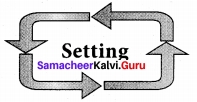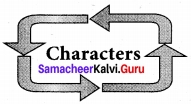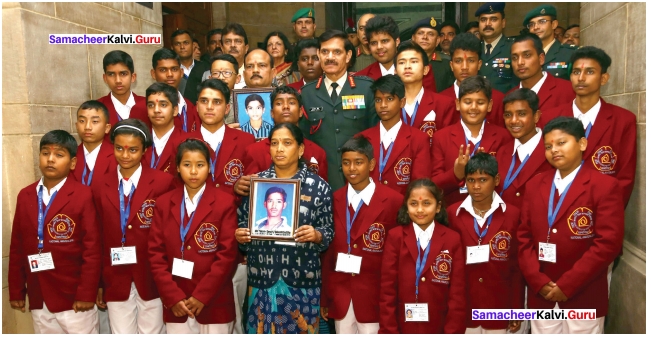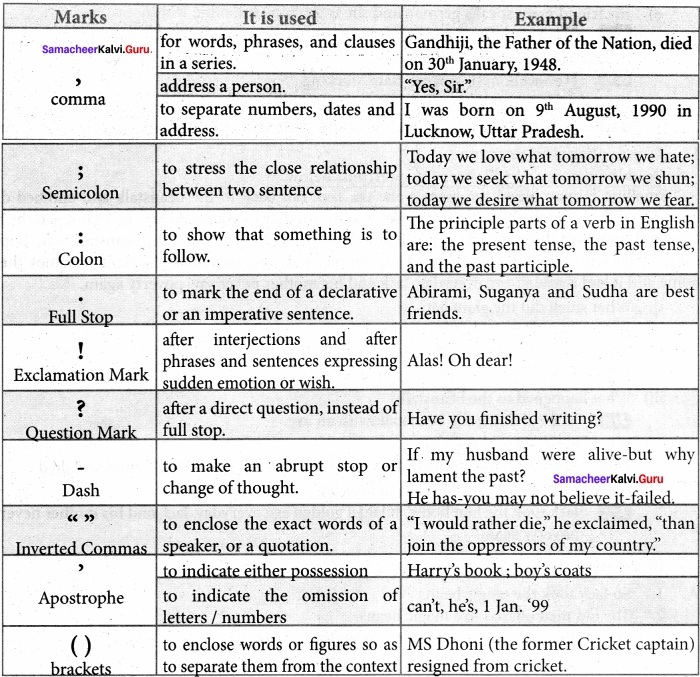Students can Download Maths Chapter 6 Information Processing Ex 6.1 Questions and Answers, Notes Pdf, Samacheer Kalvi 7th Maths Book Solutions Guide Pdf helps you to revise the complete Tamilnadu State Board New Syllabus and score more marks in your examinations.
Tamilnadu Samacheer Kalvi 7th Maths Solutions Term 3 Chapter 6 Information Processing Ex 6.1
Question 1.
Match the following:
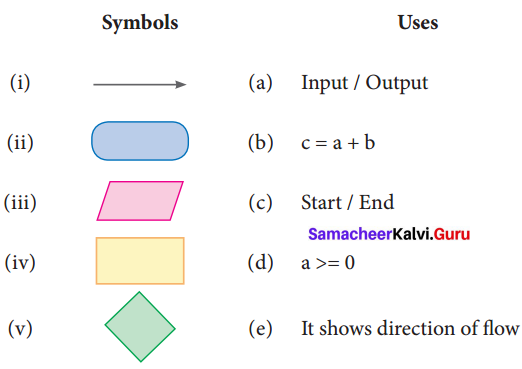
Solution:
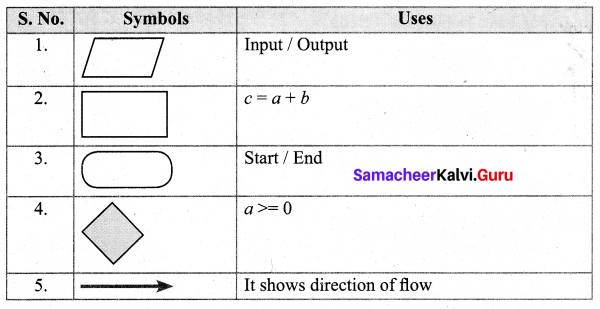
![]()
Question 2.
The steps of withdrawing cash from your saving bank account using ATM card are explained in the figures given below. Construct an appropriated flow chart.
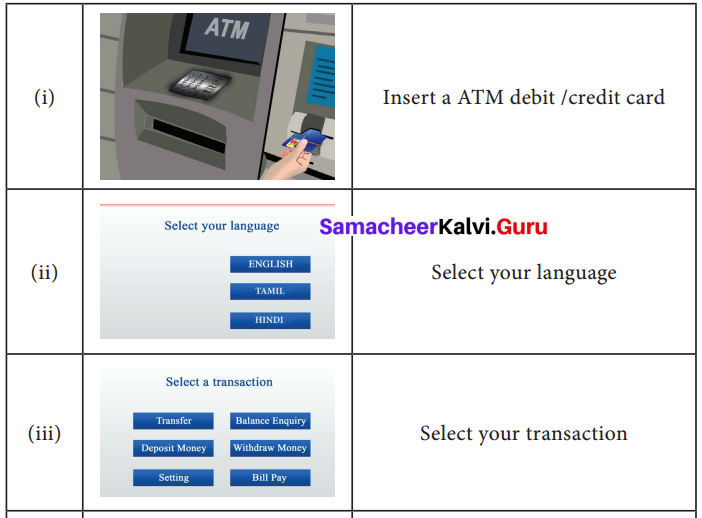
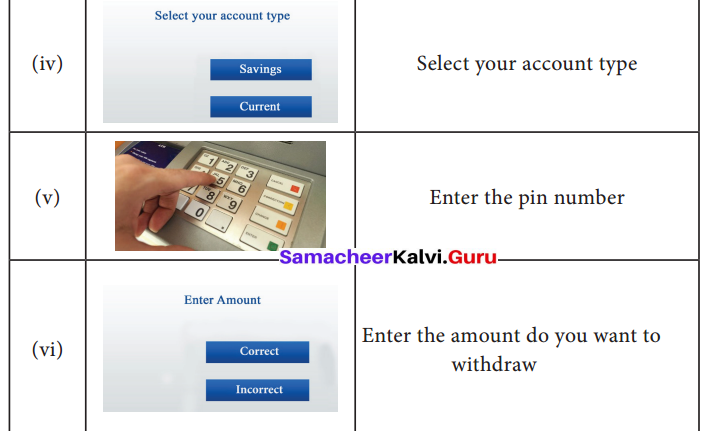

Solution:
Algorithm:
(i) Swipe your bank Debit card / credit card.
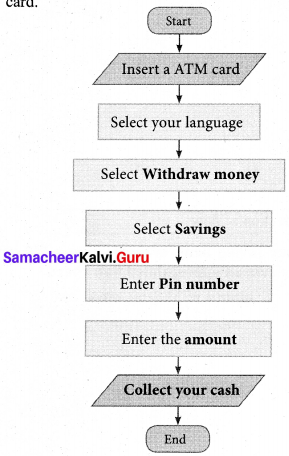
(ii) Select banking
(iii) Select language
(iv) Select transaction
(v) Enter your PIN
(vi) Enter the required amount
(vii) Collect your money
![]()
Question 3.
Using given step by step process to recharge mobile phone, draw a sequence flowchart.
Step by Step process:
- Login the mobile recharge web browser
- Select prepaid or postpaid
- Enter mobile number
- Select operator and browse plans to choose your recharge plan
- Enter amount to recharge
- Proceed to recharge
Solution:
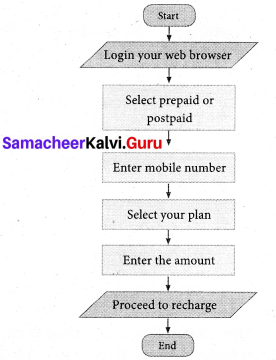
Question 4.
Complete the direction of the flowchart using arrows for the flow chart explaining the traffic rule given below.
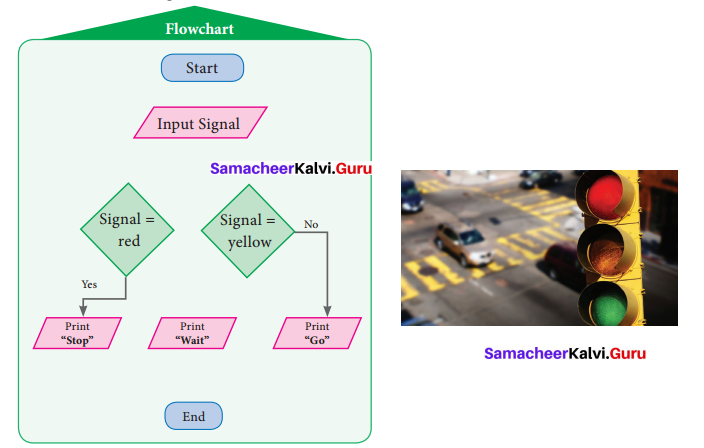
Solution:
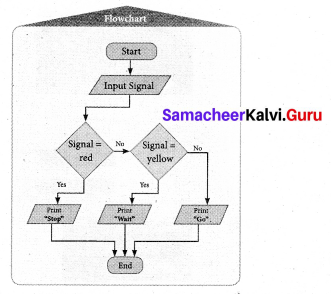
![]()
Question 5.
Complete the given flowchart, input names of things and check whether it is living or non – living.
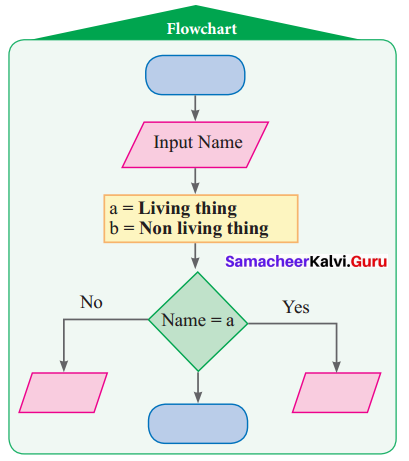
Solution:
Input name Horse
Horse = a Yes
Print Living thing
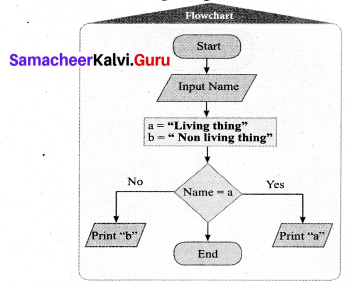
![]()
Question 6.
Complete the given flowchart.
(i) Fill in the flow chart to print the average mark by giving your I term or II term marks as inputs.
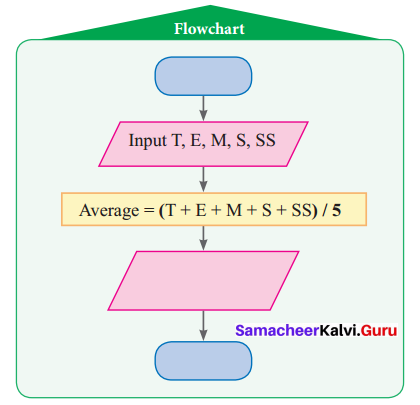
(ii) Construct the flow chart to print teachers comment as “very good” if your average mark is above 75 out of 100 or else, as “still try more” can be inserted in the flow chart with earlier one.
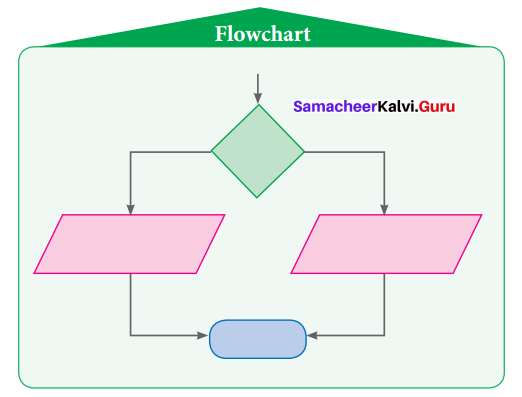
Solution:
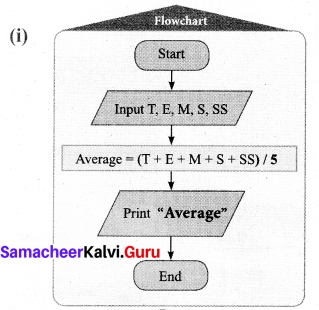
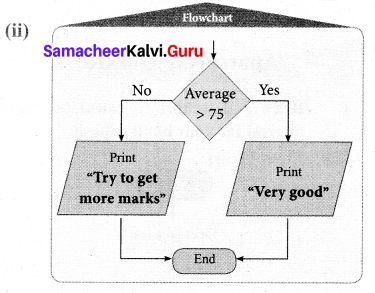
![]()
Question 7.
A merchant calculates the cost price (CP) and the selling price (SP) of the product bought by him. Construct the flow chart to print ‘PROFIT’ if the selling price (SP) is more than the cost price (CP) or else ‘LOSS’.
Solution:
First we have to input the cost price and selling price. Then we check whether cost price less than selling price. If S.P > CP, then print “PROFIT” otherwise print ‘Loss’.
Algorithm:
- Enter cost price
- Enter selling price
- Checking whether CP < SP
- If Yes print ‘PROFIT’
- If No print ‘Loss’
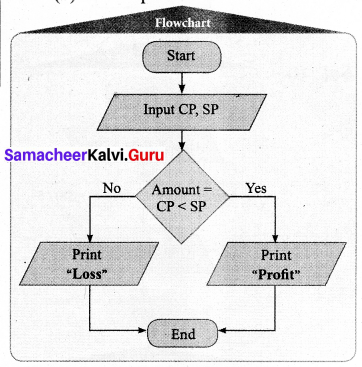
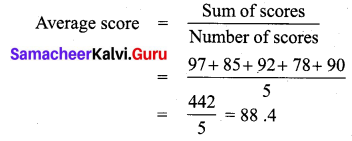

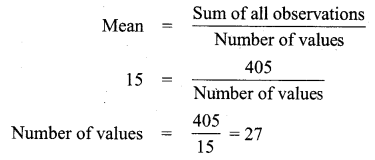
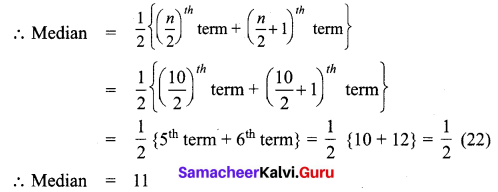

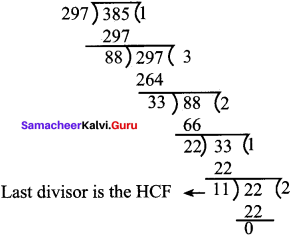

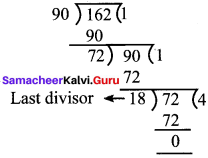


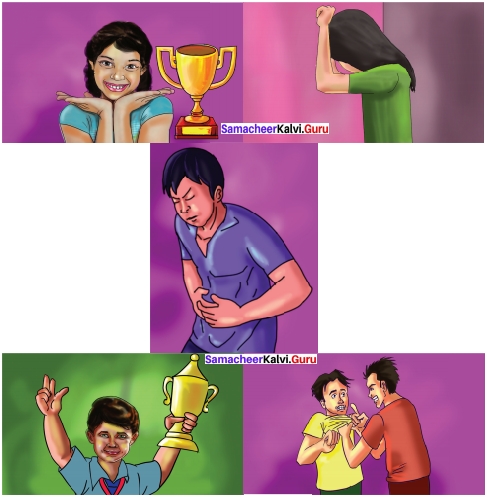
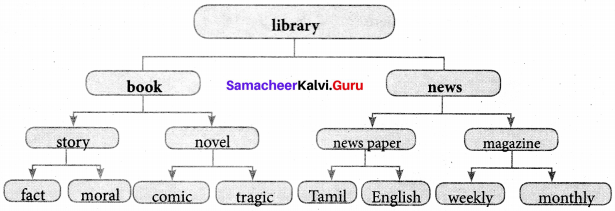
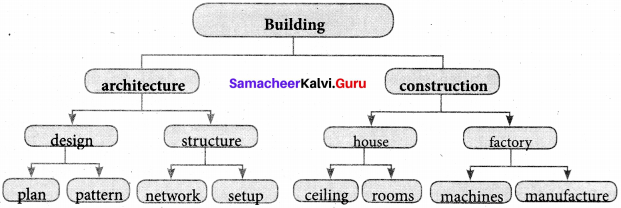

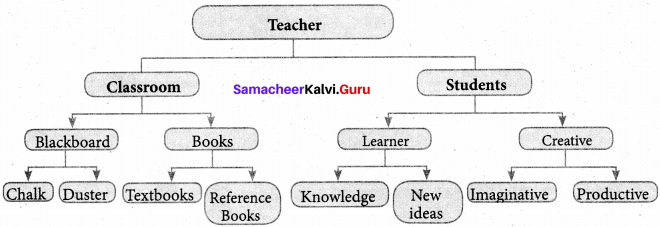
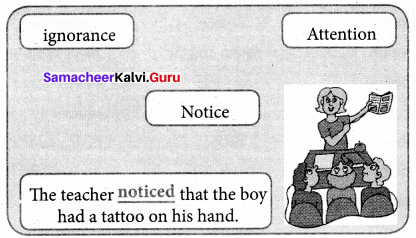
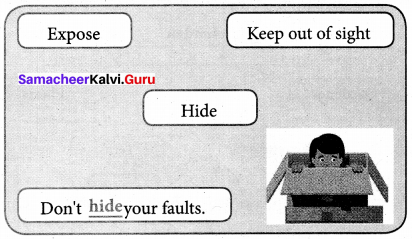
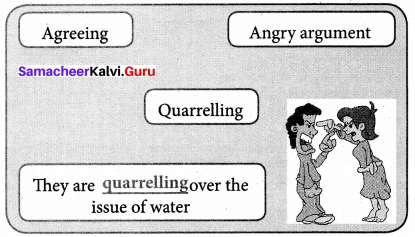
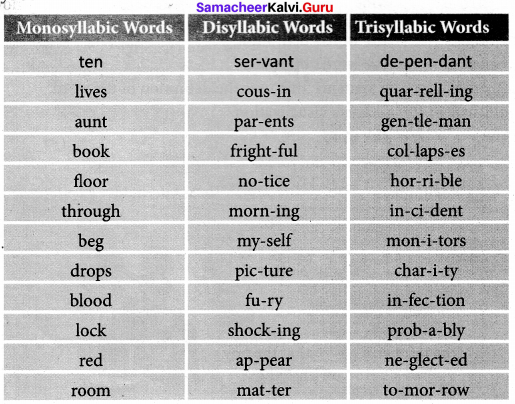

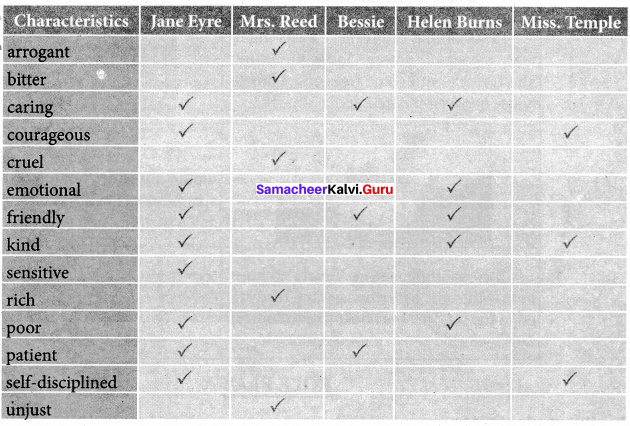
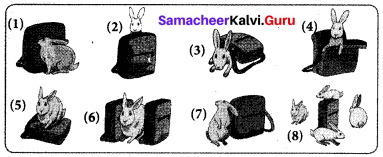
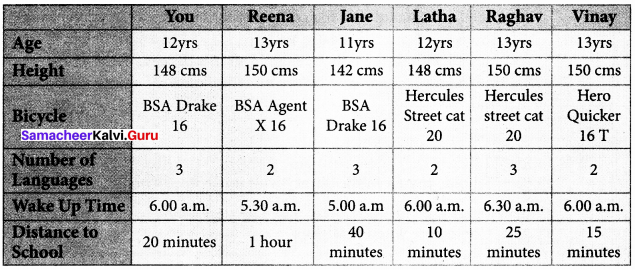
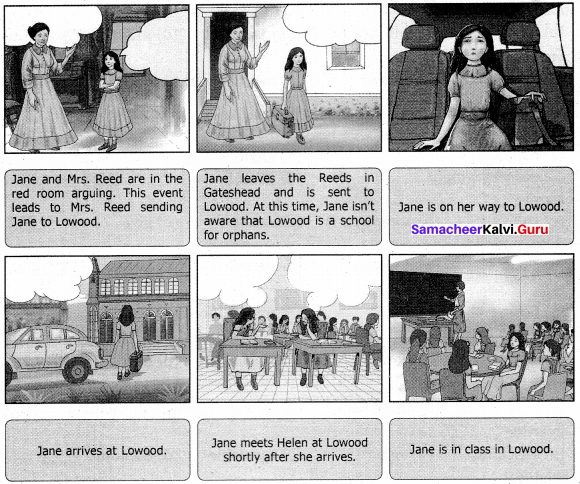 ”
”

